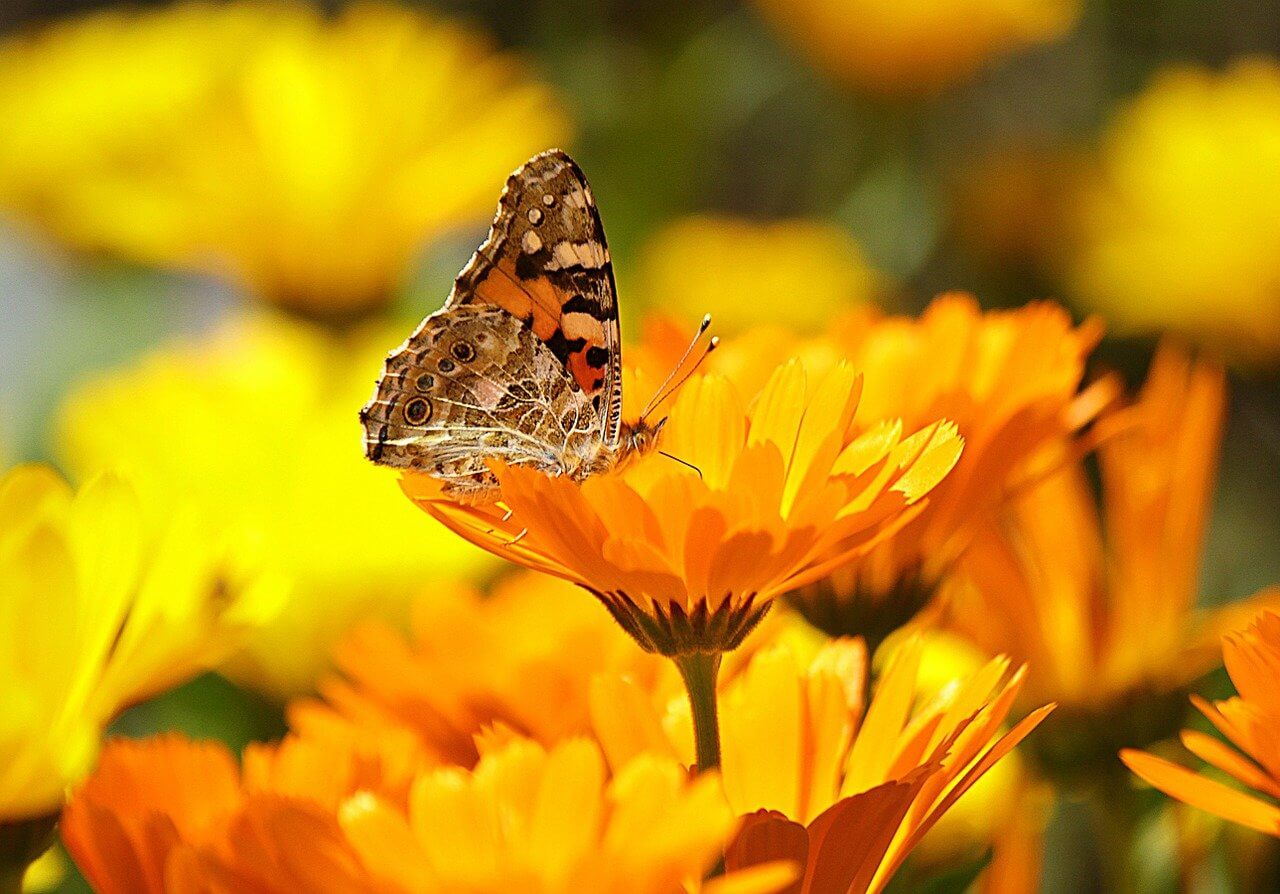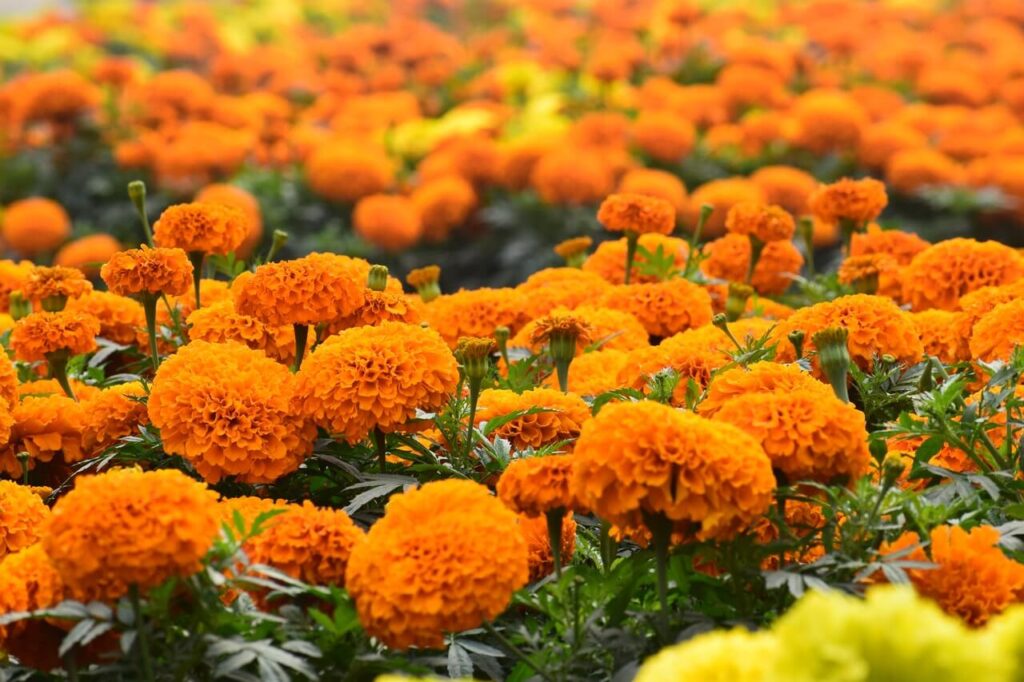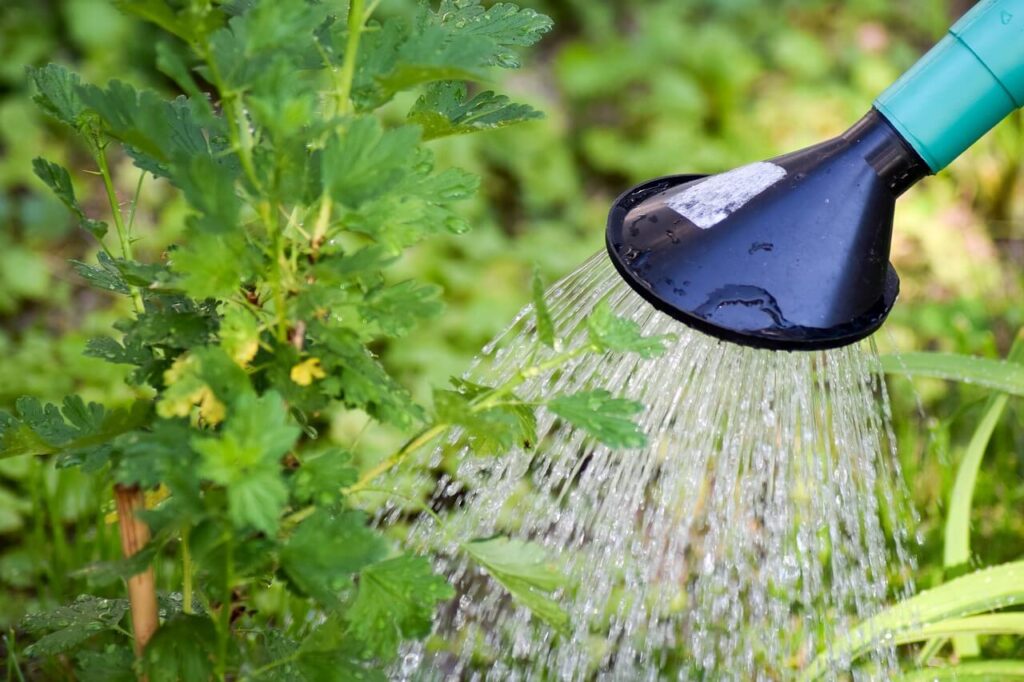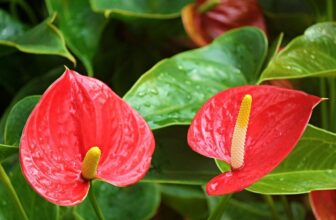
Table of Content
Marigolds are some of the most beautiful and popular flowering plants, used in various celebrations and events around the world. Widely grown during the summer, these plants stunning colors are said to bring life into the garden, as it brings sunshine into the garden attracting insects like bees, butterflies, and bugs.
If you’re looking for easy, cost-effective, reliable, and low-maintenance flowering plants to add a pop of color to your garden, why not try growing marigolds? In this article, we’ll take a look at everything you need to know about how to grow marigolds.
What are Marigolds?

Marigolds (Tagetes) is a flowering plant that belongs to the sunflower family. They vary in size averaging 5 inches to about 3 feet high and have carnation or daisy-like flower heads that bloom in clusters or singly. The flowers bloom in very dark colors of orange, golden yellow, and white and sometimes, they have decorative dark shades along the edges of the petals.
Native to subtropical America, marigolds represent strength, power, positive emotions, and energy. These flowers are grown for aesthetic purposes in gardens and are also used in bouquets and vases.
There are about 50 different species, but let’s have a look at some of the most commonly grown marigolds:
- Tagetes erecta: Tagetes erecta is also known as African Marigolds, Mexican Marigolds, or American Marigolds and grows up to a height of 3 to 4 feet, making them the tallest variety of marigold. These plants produce large, full flowers, and have the amazing ability to survive in drought-like conditions. It’s native to Central America and Mexico.
- Tagetes patula: Tagetes patula is known as the French Marigolds. Native to Mexico and Guatemala, these are relatively thicker, smaller, and a lot denser than the T.erecta variety. They grow in shades of yellow and orange. These grow wider instead of taller and have more branches (usually of an average height of 6 inches to 2 feet). T.patula are more reliable when grown in rainier conditions compared with other Tagetes species.
- Tagetes tenuifolia: Tagetes tenuifolia also known as Signet Marigolds, Golden Marigolds or Lemon Marigold. Theyare small in size and can grow in hot and dry regions. Widely spread in Mexico, Central America, and Peru. These grow up to a height of 20 inches. The flowers have a lemony flavor which is why many use them as a garnish.
- Calendula officinalis: Calendula officinalis are also known as Pot Marigolds or English marigolds. Native to Southern Europe, its colorful petals are edible due to their tangy, peppery taste it is mostly grown in kitchen gardens as herbs.
Factors to Consider
When growing Marigolds, there are many important factors to consider including the soil, sunlight, fertilizing, and many more. Let’s take a look.
Soil
Marigolds can grow almost in any type of soil, but they grow best in well-drained and moderately fertile soil. When preparing the soil dig down about 6 inches to make sure the soil is loosened and free of stones. If planting in pots, use a soil-based potting mix.
Sunlight and Humidity
These mostly thrive in full sunshine and can often survive in very hot summers. Some of the Marigolds are also drought tolerant while some are more tolerant to even wet conditions. If they are planted in cool, moist shaded areas, they are susceptible to powdery mildew and will not bloom well. Therefore make sure they get enough amount of sunlight to produce lots of flowers.
Marigolds love hot climates and survive in summers. The hot climate helps them to survive and grow without any problems.
Watering

Marigolds thrive in well-drained soil. Most gardening experts suggest allowing the soil to dry before watering it again and repeating the process. Giving the right amount of water will help these plants to produce flowers at their best throughout spring and summer.
When watering your marigolds, remember to be very careful and spray the plants from the bottom and not from the top. Watering from the top can hurt the blooms and cause leaf or bloom rot. Excess water on leaves also leads to powdery mildew. To avoid these situations make sure you spray the water on the soil for better results.
Propagation
Marigolds are propagated by seeds, which can be brought from greenhouses and nurseries. Gardeners allow the blooms to fade to turn into seeds on the plant and save them to produce new plants. However, these hybrid seeds do not reproduce like the parent plant, and some may also fail to germinate.
Even though hybrid seeds are not reliable, they can produce fascinating varieties in shape, color, or size. Marigold seeds bought at nurseries germinate quickly (in about less than a week) in ideal growing conditions. The seedlings will be ready to bloom in 45 to 50 days.
Pests and Diseases
Various types of pests and diseases can affect the growth of Marigold plants, so it’s important to know what to do in this case. Here’s a quick look at some of the most common pests and diseases that can attack your plants:
Snails and Slugs
Snails and slugs eat leaves and make holes in them. To keep them away, you can set traps for them and also keep the soil clean with no leaf debris.
Gray Mold
Gray mold is a common fungal disease that blights the stems leaves and flowers of most flowering plants. It commonly occurs in very humid or wet conditions. This disease can be prevented by spacing out the plants so that they can dry out well after the rain or watering. The early signs of gray mold include grayish-brown spots on the stems and leaves of the plants. As soon as you notice these, make sure to take necessary action. The best option is to purchase a fungicide from your local garden store.
Powdery Mildew
Powdery Mildew causes white powdery spots to form on leaf surfaces and they can quickly expand into large patches. These fungi replicate rapidly in warm and dry conditions forming new spores which easily spread the disease. If you notice that your marigolds are being affected by powdery mildew, try some of these home treatments:
- Milk: Mix one part of the milk with 2 to 3 parts of water to make a solution. Spray this solution liberally.
- Baking soda solution: Make a solution by mixing 1 tablespoon of baking soda and ½ teaspoon liquid soap not a detergent into 1 gallon of water. Spray this solution on the affected areas. This is more effective for prevention than treatment, however.
- Potassium bicarbonate: Mix 1 gallon of water with 1 tablespoon potassium bicarbonate and ½ teaspoon liquid soap (not detergent). This solution works best as a treatment, unlike the baking soda solution.
- Powdery mildew fungicide: Fungicides that contain sulfur can be used for both treatment and prevention.
- Trimming and pruning: Cut off the affected parts of the plant to stop the production of spores which will, in turn, stop the spread of the disease. Then, make sure to disinfect the tools used on the infected plants.
Fertilizing
Marigolds should not be fertilized during growth as it can cause excessive growth of foliage, rather than flowers. If the soil is very poor in nutrients, you can use a slow-release granular fertilizer.
The Dia de los Muertos Festival (The Day of the Dead)

The Dia de Los Muertos, also known as the Day of the Dead, is a holiday that originated in Mexico and is traditionally celebrated on the 1st and 2nd of November. It’s a day for families to remember and welcome back the souls of their relatives who have passed away. They celebrate this reunion with tasty dishes, drinks, and celebration, making offerings to their deceased loved ones.
On this day, each family builds an altar in their home, decked with the photos of their deceased loved ones and adorned with marigolds. The families use Marigolds to guide the spirits to their altars in case they wouldn’t be able to find their way. The strong scent of the flowers and their bright orange color is said to attract their souls to the altar.
The animated Disney Pixar movie Coco revolves around this three-day Dia de los Muertos celebration, bringing it to life and showcasing the traditions associated with it.
The Take-Away
Marigolds are one of the easiest plants that anyone can easily grow, as they don’t need much care and maintenance. They’re a good choice start for beginner gardeners who have no prior experience. With these tips and just a little effort, you can grow your very own marigolds and add a lovely splash of color to your garden in no time!






